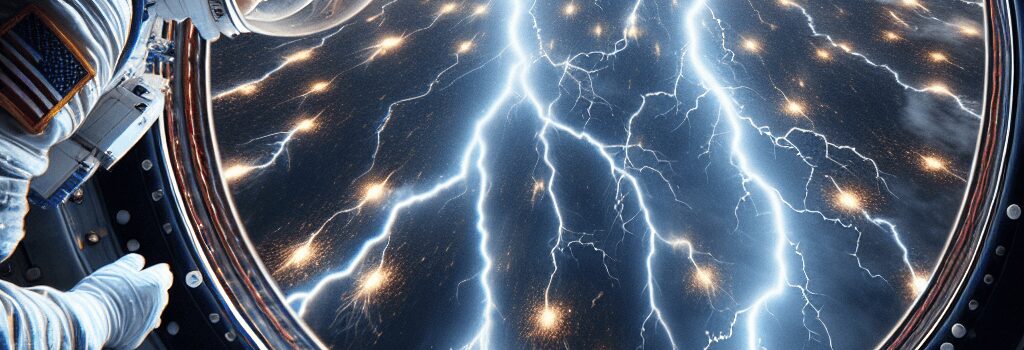Astronaut Sees Lightning from ISS in Stunning Photos

“I am so amazed by the view we have up here of our Earth’s weather systems,” says Major Nichole Ayers, reflecting on the spectacular electrical storms she observed following her first spacewalk. In early May 2025, Ayers—an F-22 test pilot turned NASA astronaut—turned her camera toward our planet and recorded a dazzling sequence of lightning strikes from orbit.
From Supersonic Skies to Spacewalk Skies
Selected as part of NASA’s Astronaut Group 23 in 2021, Major Ayers arrived at the International Space Station (ISS) on Crew-10 in March 2025. With over 200 flight hours in the F-22 Raptor and a master’s in computational and applied mathematics from Rice University, Ayers brings advanced technical expertise to every mission.
- EVA Specs: Her first spacewalk lasted 6 hours and 12 minutes, donning NASA’s EMU suit (Extravehicular Mobility Unit) with integrated life support and comms.
- Robotic Support: The Canadarm2 and Apollo-era foot restraints provided stabilization as Ayers and colleague Anne McClain worked on thermal control upgrades.
- Telemetry: Suit sensors monitored suit pressure (4.3 psi), oxygen flow (1.2 – 1.4 SCFM), and CO₂ levels in real time.
Lightning from Space: Physics and Instrumentation
Lightning on Earth is generated by charge separation in storm clouds. From 400 km altitude, the ISS provides a unique vantage point to capture phenomena like:
- Cloud-to-Ground Flashes: Bright white streaks lasting 1 – 2 ms, with electric fields exceeding 3 MV/m.
- Transient Luminous Events (TLEs): Sprites and blue jets above thunderstorms, detected by the Lightning Imaging Sensor (LIS) aboard the ISS.
- Optical Spectra: High-speed cameras record the 777 nm oxygen emission line, revealing plasma temperatures of ~30,000 K.
Implications for Weather Monitoring and Climate Research
Continuous lightning observations from space support global weather models and climate studies:
- Data from ISS-LIS feeds into NOAA’s GOES satellites, improving short-term storm forecasting.
- Correlations between lightning frequency and upper-troposphere humidity inform climate change projections.
- CubeSat missions like StormSat are launching in late 2025 to complement ISS observations at sub-second resolution.
Expert Perspectives
Dr. Maria Thompson, a space physicist at the University of Colorado, comments: “Viewing lightning from orbit helps us understand the coupling between the troposphere and ionosphere. Observations during EVAs offer high-resolution, real-time data that ground-based instruments simply can’t match.”
Looking Ahead: Artemis and Beyond
Major Ayers’ electrifying photos underscore the value of human presence in orbit ahead of NASA’s Artemis lunar missions. As Gateway assembly begins in 2026, astronauts will continue using handheld imagers alongside automated sensors, expanding our ability to study both space weather and terrestrial phenomena.
Source: Nichole Ayers/NASA